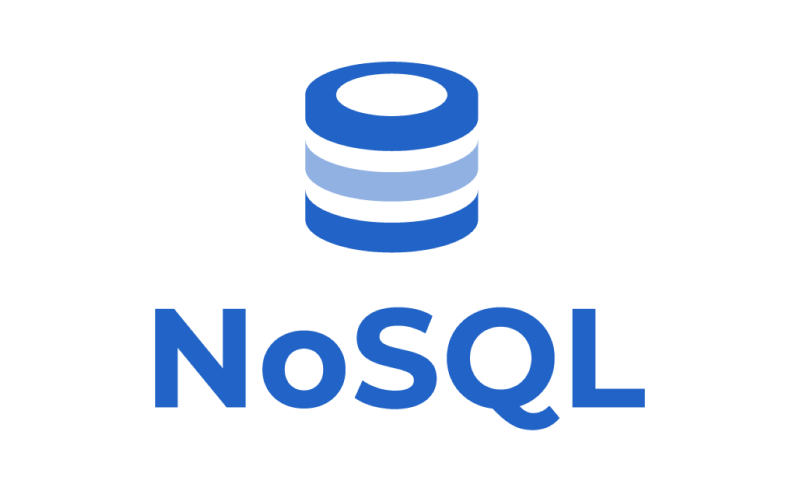
NoSQL, short for “Not Only SQL,” refers to multiple database technologies designed to handle large-scale data storage and retrieval requirements. Unlike traditional SQL-based relational databases, NoSQL databases offer flexible data models and distributed architectures that cater to the diverse needs of modern applications. When prioritizing scalability, performance, and agility, NoSQL databases let organizations manage vast amounts of data, adapt to evolving data structures, and deliver efficient and scalable solutions.
What is NoSQL
NoSQL is a family of database technologies that have emerged as a response to the ever-growing demands of modern applications. Unlike traditional SQL-based relational databases, NoSQL databases offer a flexible and scalable approach to handling vast amounts of unstructured and semi-structured data. Leading players in the NoSQL arena include MongoDB, Apache Cassandra, and Couchbase, who employ a variety of data models, such as key-value stores, document databases, and graph databases, catering to different data storage and retrieval needs.
NoSQL databases excel in their ability to handle the velocity, volume, and variety of data. They use concepts like sharding and replication for high availability and scalability, so organizations can handle massive workloads and scale horizontally. Entities like Amazon DynamoDB, Google Cloud Firestore, and Microsoft Azure Cosmos DB offer managed NoSQL database services, simplifying deployment and administration for businesses.
Instead of adhering strictly to the ACID (Atomicity, Consistency, Isolation, Durability) principles, NoSQL databases often embrace the BASE (Basically Available, Soft state, Eventual consistency) approach, prioritizing availability and performance over strict consistency. Along with this, NoSQL databases support modern data formats like JSON (JavaScript Object Notation) and BSON (Binary JSON), leading to improved integration with modern programming languages and frameworks.
How does NoSQL work?
NoSQL databases operate on a fundamentally different approach compared to traditional SQL-based relational databases. They use various data models, including key-value stores, document databases, and graph databases, to handle the diverse needs of modern applications.
One of the fundamental aspects of NoSQL is its ability to handle massive amounts of data by employing distributed systems. Entities like Apache Cassandra and Amazon DynamoDB utilize a technique called sharding, which involves partitioning the data across multiple nodes in a cluster. This lets NoSQL databases scale horizontally, allowing applications to seamlessly handle high data volumes and provide better performance. Additionally, replication plays a vital role in ensuring data availability and fault tolerance. When replicating data across multiple nodes, databases like Couchbase and Microsoft Azure Cosmos DB can achieve high availability and durability, so that data remains accessible even in the event of node failures.
NoSQL databases also offer flexible data models. For example, MongoDB and CouchDB are document databases that store data in flexible, JSON-like documents. These databases allow developers to work with unstructured or semi-structured data, making them ideal for scenarios where the data schema may evolve over time. On the other hand, graph databases like Neo4j and Apache TinkerPop specialize in storing and querying interconnected data, making them well-suited for applications that rely on complex relationships and graph-based computations.
Another key aspect of NoSQL is its support for modern data formats. NoSQL databases often embrace JSON and BSON as native data representations, making it easier for developers to work with the data stored in NoSQL databases, as JSON and BSON are widely supported and understood throughout different technologies. Furthermore, NoSQL databases often provide APIs or query languages specific to their data models, such as Cassandra Query Language (CQL) for Apache Cassandra or Gremlin for graph databases, allowing developers to interact with the data using familiar syntax and conventions.
Examples of NoSQL databases
Apache Cassandra:
Cassandra is a distributed database management system, designed to handle large volumes of data with high availability and performance. It is used for real-time data processing and the ability to scale out horizontally.
Apache CouchDB:
CouchDB is a document database that is designed to store data in the form of JSON documents. It is often used for applications that require the ability to handle complex data.
Amazon DynamoDB:
DynamoDB is a fully managed, key-value store that is offered as a part of the Amazon Web Services (AWS) cloud platform. It is designed to handle large volumes of data with high performance and the ability to scale out horizontally.
MongoDB:
MongoDB is a document database that is designed to store data in the form of JSON-like documents. It is often used for applications that require the ability to handle data with complex or hierarchical structures, and is well-suited for handling unstructured data.
Exploring the advantages of NoSQL database technology
By using a wide range of advantages, NoSQL databases help organizations to handle large volumes of data, deliver high performance, and adapt to evolving application needs.
Scalability and high performance
NoSQL databases excel at scaling horizontally to handle massive workloads. With entities like MongoDB and Apache Cassandra, organizations can distribute data across multiple nodes and easily add new nodes to accommodate growing data volumes. This scalability allows applications to achieve high performance and handle increased user demands efficiently.
Flexible data models
NoSQL databases offer flexible data models, catering to various types of data and evolving schema requirements. Document databases like Couchbase and MongoDB enable storing and querying unstructured or semi-structured data, while graph databases like Neo4j and Apache TinkerPop specialize in representing and traversing complex relationships. This flexibility empowers developers to adapt their data models as application needs evolve.
Rapid development and iteration
The flexible schema of NoSQL databases allows for rapid development and iteration cycles. Developers can quickly prototype and modify the data structures without the constraints of predefined schemas found in traditional relational databases. Using entities like CouchDB or Firebase Realtime Database means developers can focus on application logic and iterate faster, speeding up the development lifecycle.
High availability and fault tolerance
Databases, such as Amazon DynamoDB and Google Cloud Firestore, provide built-in replication and fault-tolerant mechanisms. By replicating data across multiple nodes or regions, these databases give high availability and durability, minimizing the risk of data loss and providing robust disaster recovery capabilities.
“NoSQL databases operate on a fundamentally different approach compared to traditional SQL-based relational databases.”
Distributed architecture
NoSQL databases leverage distributed architecture, enabling data to be spread across multiple nodes in a cluster. This distributed nature allows for better fault tolerance, increased availability, and improved performance. Technologies like Apache Kafka and Apache Ignite enhance this architecture by providing distributed messaging and in-memory caching capabilities, respectively.
Horizontal scalability
NoSQL databases embrace horizontal scalability, allowing organizations to add more nodes to a cluster as data volumes grow. This ability to scale horizontally, as seen in Apache Cassandra or Couchbase, makes sure that applications can handle increasing workloads and deliver consistent performance even during peak usage periods.
Big data and real-time analytics
NoSQL databases are well-suited for handling big data and enabling real-time analytics. Time series databases like InfluxDB and columnar databases like Apache HBase are designed to efficiently store and query vast amounts of data, making them ideal for scenarios such as IoT, log analysis, and sensor data processing.
Simple deployment and administration
Managed NoSQL database services, such as Microsoft Azure Cosmos DB or Amazon DynamoDB, simplify deployment and administration tasks for organizations. These services handle the infrastructure management, data replication, and scaling aspects, allowing businesses to focus more on their applications and less on database administration.
Who uses NoSQL?
NoSQL databases are used by a wide variety of organizations, including businesses, government agencies, and nonprofits. They are often used in applications where traditional, relational database management systems (RDBMSs) may not be the best fit, due to the need to handle large volumes of data with complex or varied structures, or the need for high levels of scalability, performance, and availability.
The databases can be used by:

eCommerce companies
NoSQL databases can be useful for storing and processing large volumes of data related to customer orders, product catalogs, and other types of data.

Healthcare organizations
NoSQL databases can be useful for storing and processing large volumes of data related to patient records, clinical trials, and other types of data.

Government agencies
NoSQL databases can be used by government agencies to store and process data related to citizen records, voting records, and other types of data.

Financial institutions
NoSQL databases can be used to store and process data related to financial transactions, such as stock trades or credit card transactions.

Social media companies
NoSQL databases can be used to store and process data related to user profiles, posts, comments, and other types of data generated by social media platforms.

IoT companies
NoSQL databases can be used to store and process data generated by connected devices and sensors, such as data related to energy consumption, temperature, or air quality.
Potential challenges in adopting NoSQL for data management
While NoSQL databases offer various advantages, it’s important to consider potential drawbacks as well. Understanding the unique disadvantages associated with NoSQL can help organizations make informed decisions about their data storage and management strategies.
Limited querying capabilities |
NoSQL databases, such as key-value stores or wide-column stores, often prioritize scalability and performance over complex querying capabilities. While they excel at simple read and write operations, they may lack the expressive power of SQL for complex relational queries. This limitation can pose challenges when dealing with intricate data relationships or when advanced querying capabilities are required. |
Lack of transaction support |
Some NoSQL databases, like MongoDB and Apache Cassandra, sacrifice full ACID (Atomicity, Consistency, Isolation, Durability) transaction support for improved scalability and performance. While they offer eventual consistency and can handle large-scale concurrent writes, they may not provide the same level of transactional integrity as traditional relational databases. Organizations that rely heavily on complex, multi-step transactions may find this trade-off a disadvantage. |
Learning curve and development complexity |
NoSQL databases often introduce new data models and query languages, requiring developers to learn and adapt to these technologies. For example, graph databases like Neo4j use graph traversal and query languages like Cypher, which may have a steeper learning curve compared to SQL. This learning curve and the associated development complexities can be a challenge for teams transitioning from traditional relational databases or for organizations with limited resources for training and skill development. |
Data integrity and consistency trade-offs |
The eventual consistency model employed by many NoSQL databases allows for faster write operations and improved scalability but may sacrifice strict consistency. In scenarios where real-time consistency is crucial, such as financial systems or inventory management, NoSQL databases may require additional measures or custom logic to ensure data integrity and consistency across distributed nodes. |
Limited tooling and ecosystem support |
Compared to the mature tooling and extensive ecosystem around traditional relational databases, NoSQL databases may have a more limited selection of tools, libraries, and frameworks available. This can make certain tasks, such as data migration, monitoring, or reporting, more challenging and require additional development effort. |
Data duplication and denormalization |
Denormalization, a common practice in NoSQL databases, involves duplicating data across documents or collections to optimize read performance. While denormalization improves query performance, it can lead to data redundancy and increased storage requirements. Careful data modeling and management strategies are necessary to ensure data consistency and avoid potential pitfalls associated with duplicated data. |
Vendor lock-in and compatibility issues |
NoSQL databases often come with vendor-specific features, APIs, and query languages. This can result in vendor lock-in, making it challenging to switch databases or integrate with other systems. Compatibility issues may arise when trying to migrate data between different NoSQL databases or when integrating with existing systems built around traditional SQL-based databases. |
